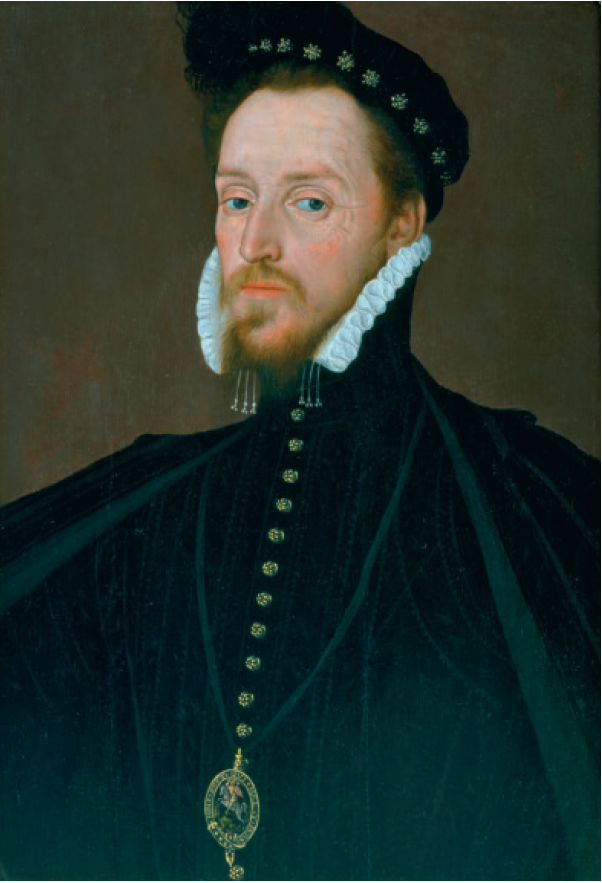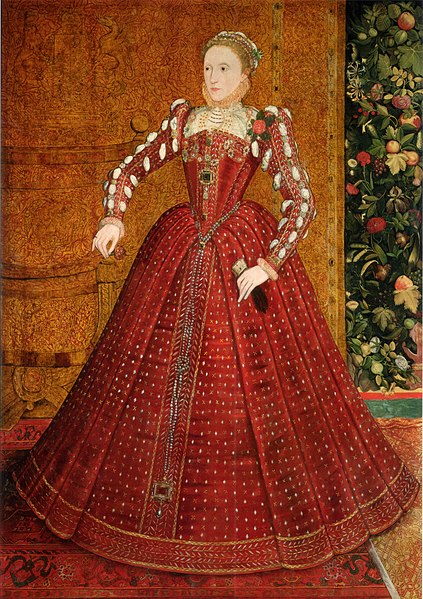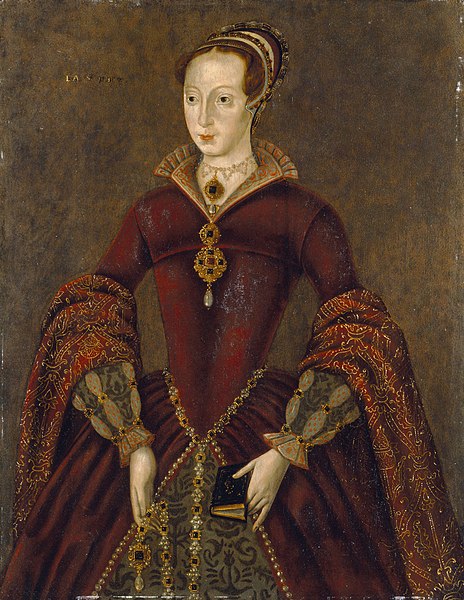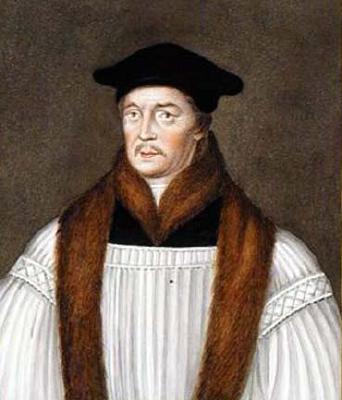 |
| Margaret Audley, Duchess of Norfolk |
Given that
the Pope was unlikely to grant a dispensation of marriage and that Elizabeth
was to restore the Protestant religion, Norfolk quietly married Margaret Audley
at the end of November. In March 1559 parliament approved the marriage.
Overseeing the
queen’s coronation was Norfolk’s responsibility as Earl Marshal[i], he also claimed and was
given the role of Chief Butler. But first it fell to him to arrange Queen
Mary’s funeral, which took place on 13th December. On 15th
January 1559 the new Queen’s coronation took place. The new Duchess of Norfolk
carried the new Queen’s train, while Norfolk walked before Elizabeth carrying
her crown.
Before the
coronation banquet Norfolk and his former father-in-law Arundel rode into
Westminster Hall to announce each course[ii] and to announce the
Queen’s champion. On the Tuesday at a joist in the Queen’s honour Norfolk rode
with Sir Robert Dudley and Lord George Howard against adventurers.
Early Successes
Earl of Sussex
The queen’s
unmarried state was a concern for her advisers and Norfolk, William Cecil and the Earl of Sussex[iii] were among those who felt that a
foreign prince would help keep England safe; however the majority of her
subjects believed that Elizabeth should marry an Englishman. She herself
claimed that she had;
‘Taken a vow to marry no man
whom she has not seen, and will not trust portrait painters.’[iv]
In the very
short period before his marriage to Margaret Audley there had been some talk of
Norfolk’s marrying the new queen, as the country’s most senior noble.
In the autumn
of 1559, a year that saw Norfolk spending a lot of time on his estates on leave
from court, he received a letter from his old master John Foxe, along with a copy
of the first part of his Church History, which had been published in Basle in
September. Norfolk was pleased to hear from his former tutor.
‘I have received your letter,
my excellent master, from which I learn your affection for me, which is very
acceptable…………For I wrote to them [Norfolk’s servants] they should so provide
you with all things that you might speedily come to me.’[v]
Norfolk’s
servants found lodgings for Foxe in Aldgate, where he was to start work on his Martyrology.
Foxe’s health had suffered in exile and Norfolk later had him stay in the
country and later found a post for him in Norwich.
A Royal Affair
Lord Robert Dudley
When Norfolk
and his wife returned to London in November, it was to find the court aghast at
the romance blossoming between the queen and Lord Robert Dudley [vi]. Dudley and Norfolk had
been thrown together as Dudley was Master of the Queen’s Horse. Dudley was the
Duchess of Norfolk’s ex-brother-in-law.
Norfolk
looked down on Dudley, convinced that he was playing for the crown. In addition
Dudley had been interfering in East Anglian affairs, a province Norfolk viewed
as his own. Dudley had also been granted immunity by the queen from a
parliamentary subsidy, assessed on the value of personal estates. Norfolk, as
one of the great nobles of the land, owed more than most other of the nobility
and he was further infuriated by this show of favour.
The Spanish
Ambassador wrote to Philip II, following a conversation with Norfolk
‘The Duke of Norfolk is the
chief of Lord Robert’s enemies, who are all the principal people in the kingdom
and that he had said that if Lord Robert did not abandon his present
pretensions and presumptions, he would not die in his bed……..I think his hatred
of Lord Robert will continue, as the Duke and the rest of them cannot put up
with his being king.’[vii]
Not long
before Christmas 1559 Norfolk approached Dudley, recommending that the queen
should marry a son of the Holy Roman Emperor, Charles V. Dudley was furious,
claiming that Norfolk was not a good Englishman for suggesting that the queen
marry a foreigner, but then Dudley did have an ulterior motive.
A Brush with Scotland
Mary of Guise
On 25th
December 1559 Norfolk was appointed Lieutenant General in the North. On 21st
October 1559 the Scottish Protestant Lords revolted against the reign of the
Catholic Mary of Guise, the second wife of James V of
Scotland and regent for her daughter Mary[viii], next in line for the
English throne.
From
February to July 1560 Norfolk was commander of the English Army in Scotland,
assisting the Lords of the Congregation against Mary. Elizabeth wrote to her
commander;
‘Use all Meanes possible to
comfort the Lords of Scotland, and to
assure them that the Quene’s Majesty will never give over this Enterprise,
until she have this revenged, and that Land sett at Liberty.’[ix]
Elizabeth
was angered by the initial failures of the expedition as the joint armies
floundered before Leith, held by the French. But Mary of Guise was dying and as
their provisions were running low the French were prepared to come to a
settlement.
In the Treaty of Edinburgh signed on 5th July the French agreed to
recognise Elizabeth as queen of England and Ireland and that Queen Mary of
Scotland would no longer use those armorial bearings. Mary of Guise had died 11th
June at the age of 44. Henceforth her headstrong 17 year old daughter Mary
would no longer have her mother to advise her.
Domestic Affairs
In 1561
Robert Dudley was conspiring with the Spanish Ambassador for support for his
marriage to Elizabeth, in exchange for returning the country to Catholicism.
Norfolk spent much of this period at Kenninghall, where on 24th
August 1561 Margaret bore Norfolk’s third child, a boy named Thomas[x]. A girl, Elizabeth had been born the
previous year, but she died in infancy.
The
knowledge of Dudley’s double dealings can only have deepened the rift between
the two men. Norfolk was in the queen’s bad books for his dislike of her
favourite. According to the Spanish Ambassador the queen was
‘Determined to humble him
when she can……..He [Norfolk] on his side is full of boasts, although I do not
know how it will turn out when he has to carry them into effect.’[xi]
Lord Hunsdon
Early in
March 1562 Norfolk was sent to Yorkshire, where he was joined by the Marquess
of Northampton, the Earls of Huntingdon and Rutland and Lord Hunsdon[xii]. They were there under the pretext of involvement in
a hare hunt; in reality the queen required them the keep the north quiet.
It was
feared that the Catholic Lennox family might raise the north in support of Henry Darnley’s proposed
marriage with Mary, Queen of Scots. Elizabeth wanted mother and son brought
back to London. Lady Douglas was interred in the Tower, but her son escaped to
Scotland.
Norfolk
returned to London on 8th October to find the capital in crisis. The
queen had smallpox and her life was in danger. Unable to nominate a successor
due to her delirium the Privy Council fully expected to make that decision.
Upon her return to consciousness Elizabeth begged the council, in the event of
a future emergency to make Robert Dudley Protector of the Kingdom, with a
£20,000 per annum salary[xiii].
Meanwhile
Norfolk was haemorrhaging money on the upkeep of six magnificent houses. He saw
it as his duty, as the most senior member of the nobility, to keep up
appearances[xiv].
On paper Norfolk was the richest man in the country, but he had great
difficulty living within his income and even the queen allowed him leeway in
paying his debts to the crown. Norfolk claimed that his proposals to pay off
his debts were not accepted;
‘I shall be driven to break
up my house and sell £300 or £400[xv]
of land for answering of my debt to others.’[xvi]
In his
dealings with the Exchequer Norfolk was not the loser, but he felt angry that
the £2,000[xvii]
he had expended on the Queen’s business in the North had not been refunded to
him, while William Cecil, who had joined him for less than a third of the time,
had been awarded substantial grants of Crown lands and the exceptionally
remunerative office of Master of the Wards[xviii].
Although
premier peer of the realm; Norfolk had not hitherto been admitted to the Privy
Council. On 20th October he and Robert Dudley were both made Privy
Councillors; Norfolk being seen as a counter-balance to Dudley’s rising power.
Elizabeth circa 1563
During 1563
a rift occurred between Cecil and Norfolk, possibly engineered by Dudley, who
may have still been hoping to marry the Queen[xix]. But the rift, caused by
rumours at court was mended as the two were soon again pressing for Elizabeth
to marry Archduke Charles of Austria.
Bibliography
Elizabeth
and Mary – Jane Dunn, Harper Perennial 2003
Walsingham –
Alan Haynes, Sutton Publishing 2004
Elizabeth I
– Anne Somerset, Fontana 1992
Rivals in
Power – ed. David Starkey, Macmillan London Ltd 1990
A Tudor
Tragedy – Neville Williams, Barrie and Rockcliff 1964
www.wikipedia.en
[i]
For which he received an annual fee of £123 14 shillings; or in 2010 worth £36,600.00 using the retail
price index £571,000.00 using
average earnings www.measuringworth.com
[ii]
They had eaten before the banquet
[iii]
Another cousin of Norfolk’s
[iv]
Elizabeth - Somerset
[v]
A Tudor Tragedy - Williams
[vi]
The future Earl of Leicester
[vii]
A Tudor Tragedy - Williams
[viii]
In December 1557 a group of Protestant Scottish Lords objected to the marriage
of Queen Mary of Scotland the Dauphin of France, the future François II. Determined
that Scotland would not remain a Catholic country they provided support to John Knox.
[ix]
Elizabeth and Mary - Dunn
[x]
The 1st Earl of Suffolk
[xi]
A Tudor Tragedy - Williams
[xii]
A cousin of both the Queen and Norfolk, Hunsdon’s mother was Mary Boleyn,
[xiii]
At 2010 worth £5,220,000.00 using the retail price index or £65,500,000.00
using average earnings www.measuringworth.com
[xiv]
The influx of monies from the New World was causing
[xv]
As of 2010 worth £108,000.00 using the retail price index or £1,240,000.00
using average earnings www.measuringworth.com
[xvi]
A Tudor Tragedy - Williams
[xvii]
As of 2010 worth £563,000.00 using the retail price index or £6,910,000.00
using average earnings www.measuringworth.com
[xviii]
Head of the Court of Wards and Liveries
[xix]
His wife, of ten years, Amy
Robsart died in September 1560 and he was high in the Queen’s favour










